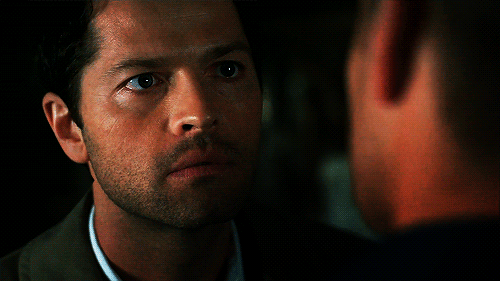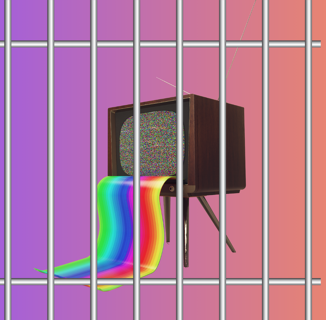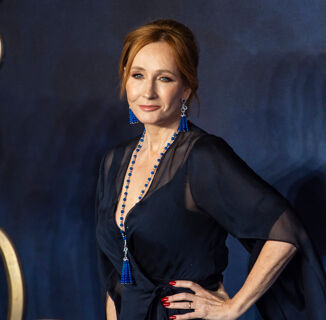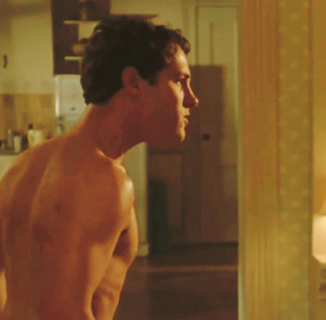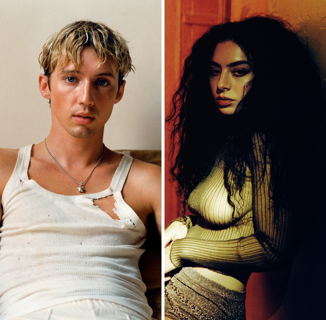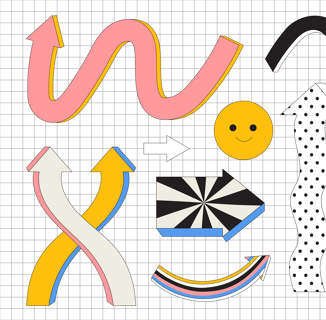TV series creators have a hard time not tailoring content towards a strictly heteronormative audience, refusing to lean in to queer context, no matter how large an LGBTQ following a show may have.
Once a fictional character is put out for public consumption, it ceases to be the one thing it’s described as on paper. This is especially the case with TV and film, where said character goes through so many hands before hitting the screen and becoming public property.
There are three kinds of creators when it comes to queer content on TV. The first (and sadly, most typical) is the creator who will deny any intention of creating queer content, and who will also refuse to acknowledge a queer audience’s interpretation., This often results in an instant backlash, as the Supergirl cast and creators experienced after an embarrassing interview with MTV last summer. When prompted to recap the latest season, the cast broke into a cringeworthy song that mocked fans’ interest in the Supergirl/Lena Luthor pairing, with Jeremy Jordan repeatedly exclaiming that the two will never get together. It continued despite Katie McGrath’s attempt to save the interview saying, “The great thing about what we do is, like any art, anyone can read into it what they want.” Chris Wood then chimed in with “Sexuality is all about others’ perception of yours, right?”
Supergirl is a show with a large female following that from the beginning has gravitated toward the female relationships it portrays, with emphasis on those relationships with strong queer energy. At first, there was a group of internet fans that were drawn to the chemistry between Melissa Benoist and Calista Flockhart, which was maximized due to the characters’ intense mentor/mentee relationship, and that was fine, and for the most part went unacknowledged by the show.

However, upon Flockhart’s exit, Lena Luthor was introduced, played by Katie McGrath. Kara Danvers and Lena Luthor became fast friends, and fans’ fascination with Supergirl’s queer vibes grew strong enough for the the cast to take notice. One would think that by having Alex Danvers and Maggie Sawyer, two queer characters already in their orbit, fan speculation about others wouldn’t be such an inconvenience that it would have to be addressed by aggressively singing “They’re only friends!” over and over, as if the pairing were unfathomable.
But Supergirl hasn’t been the only show to outright reject queer interpretations. In fact, a few years back, the long-running series Supernatural was called out by its fans for purposefully inserting homoerotic subtext within storylines pertaining to male characters Dean and Castiel, and for rather indirectly addressing said subtext in interviews. In one of them, Misha Collins (Castiel) stated that in certain scenes with Jensen Ackles (Dean) he was directed to portray his character as a “jilted lover.”

During a Toronto Con panel in 2013, it was revealed that a line was changed by Ackles — who last year specifically requested no questions about the popular pairing be allowed during the Q portion of a panel for the show at New Jersey Con–from “I love you” to “We’re family. I need you” because the Actor didn’t think it suited his character. Despite fandom’s interest in the pairing, it hasn’t been enough for Supernatural to follow through with an actual queer storyline, aside from the one recurring lesbian character, Charlie, who was ultimately killed off. It turns out our tolerance for queerbaiting does have its limits.
Another show that failed to address the sapphic energy between its leads, in effect rejecting a great opportunity to add a bonus layer to an already complex relationship between two women, was Damages. The thriller starred Glenn Close as powerhouse prosecutor Patty Hewes, and Rose Byrne as her protégée, Ellen Parsons. The series went on for five seasons and throughout, though it benefitted from incredible writing, its highlight was clearly the tension and undecipherable relationship between Patty and Ellen.

While there was never any doubt that their connection was what kept the show’s palpable tension dial at a 10, anytime the subject was brought up to either cast or creators it was denied or waved off as “wishful thinking,” as Glenn Close put it. When pressed further, she added, “I think there’s something seductive about Patty and she just seduces people and she’ll lead people on. I think that can come across as pure seduction.”
The second type of creator is the kind that picks up on the audience’s perception, trusting and respecting them enough to take a closer look at whatever connection or tension the audience is picking up on. Person of Interest and Jane the Virgin are perfect examples.
With Person of Interest, Sameen Shaw (Sarah Shahi) and Root (Amy Acker) first connected under very unique, very dark circumstances in which one was holding the other against their will in a life threatening situation. But there was a sizzle there that the audience immediately responded to, and while both cast and writers admitted that was not their intention, something amazing happened they took that audience reaction and ran with it. In the end, Shaw and Root’s romance became one of the show’s more compelling storylines.
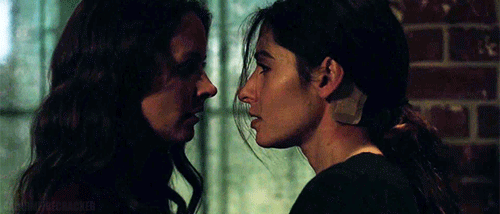
Jane the Virgin did the same. When a character, Petra, who wasn’t intentionally written as queer read queer to LGBTQ viewers, the writers saw no problem taking the interpretation and adopting it as canon. After years of keeping Petra as a sort of peripheral player within Jane/Rafael storylines, the character of Jane Ramos was introduced as Petra’s defense attorney and eventual love interest.

The third type of creator is everyone’s favorite. This is the one that takes whatever gay subtext or context there is, embraces it, and expands upon it, recognizing that it’s there from the beginning. In the Flesh and Killing Eve are true representatives of queer entertainment that isn’t trying to steer its characters toward a path they weren’t organically wanting to go.
In the Flesh, a BAFTA-award-winning series from BBC 3, was easily one of the best shows that no one watched; a zombie show with depth, which isn’t easy to accomplish. The story takes place years after a virus epidemic that turned the infected into flesh-eating monsters is cured, and the rehabilitated are returning home. Its main character is Luke, one of the former infected, suffering from memories of the terrible things he did while sick, and tortured by his own suicide, which was prompted by the loss of love interest, Rick.

The series ran for only two seasons, with a total of nine episodes. It was inventive and creative and stands as one of the greats right next to shows like Hannibal and The Exorcist, which was unfortunately canceled by Fox this year after only two seasons of sacrilege, beautiful cinematography, Alfonso Herrera (Sense8) and a bisexual Father Marcus, played by Ben Daniels.
Killing Eve is a female-led thriller that proves that the secret to making great TV is treating characters like human beings with the capacity to change. Eve, who, when we meet her, is living a life that doesn’t seem particularly terrible, whose marriage appears to be solid, her job secure, is lured into potentially life-threatening situations for the sake of following her inexplicable attraction to a female assassin. As if beneath the surface there is a dormant unrest that is awakened with the arrival of Villanelle in her life, and though she does not stop to examine exactly what she expects to get from it, she craves and wants more of these moments that have stirred her awake. She’s both excited and frightened by Villanelle’s audaciousness, by the intrusion into her life, both figuratively and literally.

The season’s got a few episodes left, yet the most compelling, and most attentively queer moment is part of the fifth episode, in which the two women finally come face to face in Eve’s home. Eve is sopping wet in a gorgeous dress Villanelle’s purchased for her, she’s cold and visibly uncomfortable, therefore Villanelle suggests Eve should change, before proceeding to peel the dress off her herself. It is a scene that doesn’t downplay the very real danger Eve is in by having Villanelle in her home. However there is also an erotic aspect to it that is very purposeful, and as series creator Phoebe Waller-Bridge points out, the attraction is definitely mutual, “I knew that the first moment they see each other. I labeled that moment as ‘love at first sight.’ But I didn’t want it to be constrained to romance, or to lust, or anything like that. There’s something waking in Eve every day that she spends imagining what this woman is doing.”
This type of storytelling allows characters to evolve the way that they want to evolve as opposed to forcing them into a first page description. There is loyalty to the authenticity of the story, which comes from meticulous attention paid to the writing, which Waller-Green explains is all about going against cliché: “The moment something feels predictable, there’s a roar in me to just go to the most surprising place. I don’t want to bore myself.”
Oftentimes, when female queer characters are introduced, it is done in order to titillate, and their storylines are the product of a male gaze fantasy. Killing Eve manages to avoid all of that with Villanelle, a character who seems to have no specific preference when it comes to sexual partners, and yet doesn’t feel the need to use her sexuality to get what she wants. In addition to that and the meaty tension between the two leads (Villanelle and the titular Eve, played by Sandra Oh), the attention paid to the very queer theme of the show is evident in backstories of characters that would normally go without one, like that of Eve’s former boss and best friend Bill, an older man in a heterosexual relationship who casually reveals he’s loved “hundreds” of men, much to Eve’s surprise, and further reveals he is in an open relationship, and happily so.
The series proves not only that queer characters are marketable the BBC series was renewed for a second season before the first even aired but that straight creators are capable of writing queer content that isn’t offensive or over-sexualized. Phoebe Waller-Bridge credits the authenticity of the series to a collaborative effort, stating, “Because it’s all about the characters, the little details that link the two worlds, everyone’s really made it a psychological piece rather than just an artistic painting of two different people’s worlds,” but it really just goes to show that that negative aspects of queer representation that include the dreaded male gaze perspective can be avoided as long as the bar is set high enough by the showrunner.
It only takes a little bit of creativity and imagination, and a willingness to challenge the idea that heterosexual-based television makes for the best and most successful stories.
Help make sure LGBTQ+ stories are being told...
We can't rely on mainstream media to tell our stories. That's why we don't lock our articles behind a paywall. Will you support our mission with a contribution today?
Cancel anytime · Proudly LGBTQ+ owned and operated
Read More in Culture
The Latest on INTO
Subscribe to get a twice-weekly dose of queer news, updates, and insights from the INTO team.
in Your Inbox

